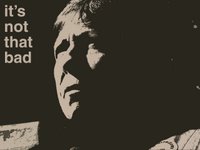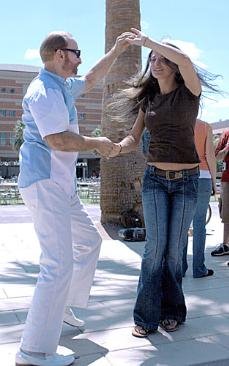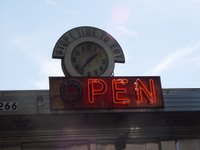I recently stumbled across these photos on my hard drive.

I was working across the street from the World Trade Center when I collected them. It was December of 1999. I was shooting with the 2.3 mega pixel
Fuji MX-2700, my first digital camera.
No one can make sense of what has happened since that time, nor can any one person truly comprehend how fundamentally our lives were altered on 9/11/2000. My son was born in August of 2000. At one month old, even his existence was altered beyond recognition in ways he'll never know.
On a personal, hyper-microcosmic level, these photos are not unlike
the photo of my father dancing with Daniela Teoc. As was the case in 'Ritmos Latinos,' the photos themselves,

the original data set, is unaltered. But the historic events between the now and the time each image was taken have so altered our perception apparatus that the data set is obscured by its
subjective metadata.
I happened to rediscover these images just as I began immersing myself in the
Marvel Comics' Civil War series, a thinly veiled commentary on 9/11 and the events that followed, particularly the Patriot Act.
I didn't grow up reading comics, though, as an adult, I occasionally find myself indulging as a furtive, guilty pleasure of sorts. But as soon as I read
Civil War #1, I was obsessed with tracing the back story through all of the issues I had missed as well as with following all new issues as they are released monthly.

The marriage of type and image has been a passion of mine for decades. In my mind, the tradition out of which comics are born dates back to such works as William Blake's 'Marriage of Heaven and Hell,' possibly even back to illuminated manuscripts. So in my mind, it is only fitting that comics address issues such as our loss of civil rights, our having sent our solders to fight a
false threat only to make ourselves doubly vulnerable to the
true threat of two rogue states eager to test the limits of their newly acquired nuclear power, and ineffective to take arms against the genocide in Africa.
And as I devour the Marvel
Civil War books, as I secretly away to scour comic shops to find precious missing issues to complete my suddenly robust collection, only to return home and discover these photos of the pre-9/11 New York City financial district, it occurs

to me that I have not yet come to terms with post-9/11 America, not yet dealt with the feelings terror, rage, loss, and, most of all, of betrayal.
Like freewill, security is a dangerous opiate. No civil rights, no matter how seemingly insignificant, are worth exchanging for the fleeting illusion of governmental protection. Privacy, the right to speak freely, to travel, to face your accuser, these are our only weapons against tyranny. 'National Security' is a brilliant tag line, second perhaps only to 'Just Do It.' In both cases, the product behind the positioning statements is suspect.
 comes mostly from our state of being, from the illusions that form the fundamentals of the complex systems we utilize to feed ourselves, to quantify our relationships to the people and things around us, to fall ill, to heal, to age, to breed, to navigate, to reproduce, to ascribe meaning, to fabricate value, and to die.
comes mostly from our state of being, from the illusions that form the fundamentals of the complex systems we utilize to feed ourselves, to quantify our relationships to the people and things around us, to fall ill, to heal, to age, to breed, to navigate, to reproduce, to ascribe meaning, to fabricate value, and to die.  And like the plastic spoon, it is inevitable and beyond our control.
And like the plastic spoon, it is inevitable and beyond our control.








